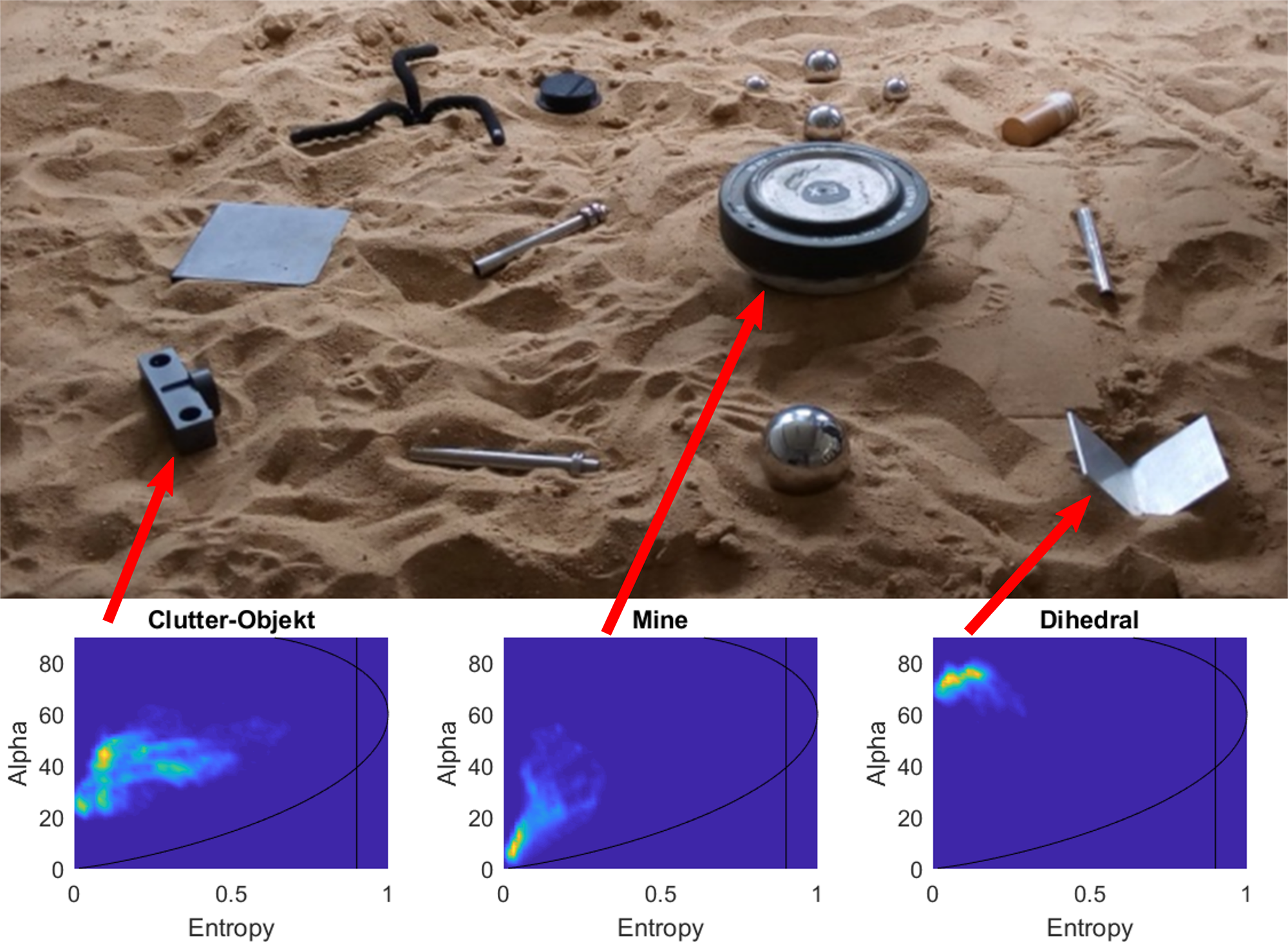How to detect all types of mines and stay safe while doing so...
Being able to look into the ground is very convenient – especially when this involves clearing minefields of their dangerous cargo. This is exactly what a ground-penetrating radar does. Fraunhofer FHR has now developed an experimental, polarimetric antenna array including analysis algorithms. The special feature: The antenna array allows for a grid width of only ten centimeters.

Clearing minefields is still a dangerous affair. Metal detectors only help with the nerve-racking search to a certain degree because many mines and improvised explosive traps nowadays consist of plastic. Therefore, a far better option to detect these explosive threats is ground-penetrating radar, GPR in short: GPR makes it possible to detect targets made of plastic or mixed materials as well as metal. The corresponding polarimetric antennas have now been developed and set up at Fraunhofer FHR, along with the algorithms for the target classification.
Compact Polarimetric Antennas
The principle: Numerous polarimetric antennas are installed one next to the other in an antenna array at the front of a vehicle where they illuminate the terrain below, while the algorithms immediately analyze the captured data. After all, the information to tell us whether there is a target in the ground in front of a vehicle has to be known before the vehicle reaches that spot. But what exactly is a polarimetric antenna and why do we need it? Many GPR systems operate with only one polarization of the emitted and received electromagnetic fields, permanently aligned with the walking or driving direction. A polarimetric antenna also has a second polarization, aligned perpendicular to the first one. Therefore, the measurement provides more information and an improved assessment. This type of antenna already exists, but the remarkable feature of this one is its compact design – a bistatic, polarimetric antenna pair with one transmitting and one receiving antenna each only takes up twice the grid size, i.e. twenty centimeters. This way, the antennas can be arranged close together side by side to quickly and effectively examine the ground along the entire width of the vehicle.
Algorithms for Classification
Another focus is the development of algorithms: These are to first analyze the material and the orientation of the target and then, in the future, proceed to also classify the target. Is this a rock, a mine, or a harmless plastic bag? A corresponding database with comparative data is required to be able to make such a classification, so for this purpose, the polarimetric antennas were used to examine a test field containing a variety of buried objects.